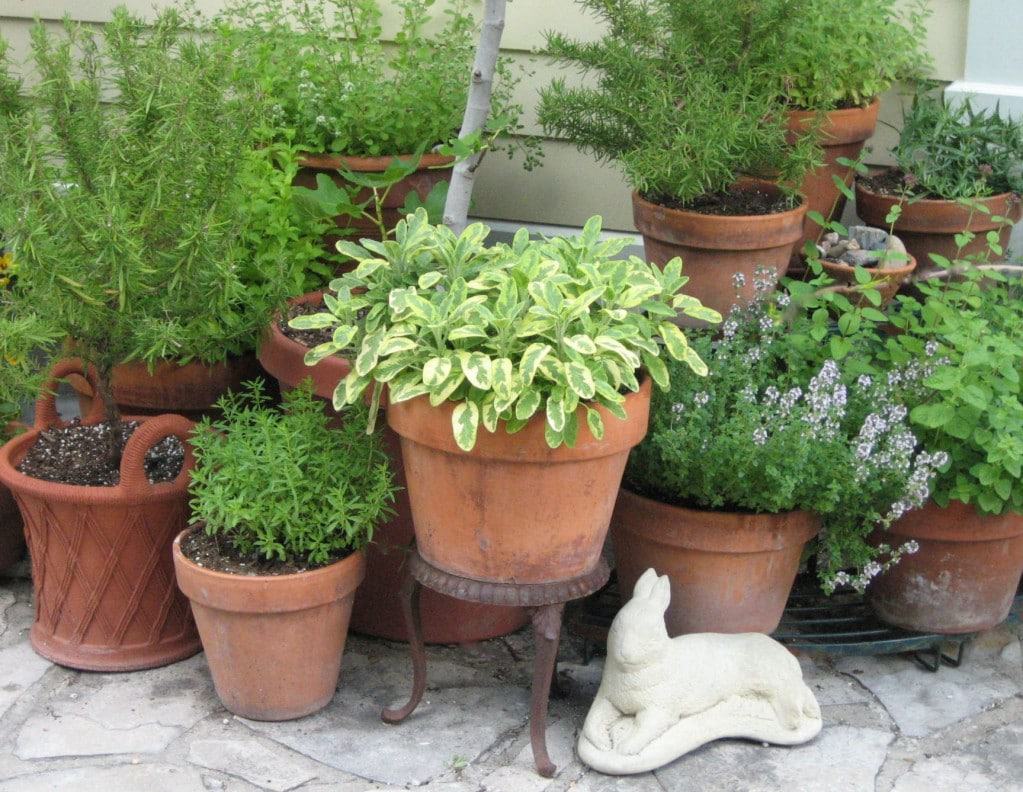
Herbs make ideal low-maintenance container plants, mainly because most thrive on minimal water and food — within reason, of course. In the case of mints, a pot is the only way to go unless you don’t mind them galloping through your garden beds.
Another practical reason to tend a herb garden above ground is convenience for the cook. I cluster several terra-cotta pots around the base of a fig tree near the kitchen door. It’s easy to step outside and snip a handful of whatever I need at the moment.
Many herbs are ornamental, such as variegated sage and lemon thyme. Rosemary and bay can be trained into topiaries. Purple basil adds contrast, as will a few pots of edible flowers, such as nasturtiums, calendula, violets or lavender.
At the end of the season, I thoroughly water the perennial herbs and store them in an unheated garage over winter. If I think of it, I water them again in January or February if they seem bone-dry, otherwise they stay dormant and undisturbed until spring when I haul them out into the shade to acclimatize for a few days. (The rosemaries and bay winter indoors near a sunny window; they grow year round and don’t go dormant.)
Once new growth commences in spring, everyone gets a trim and a weak dose of organic fertilizer. Then it’s back to the back door in full sun for another reliable supply of fresh herbs at my fingertips.









I wish I could grow cilantro but it goes to seed so quickly!
Very helpful information, particularly regarding different preserving /drying methods for different herbs. Thank you.